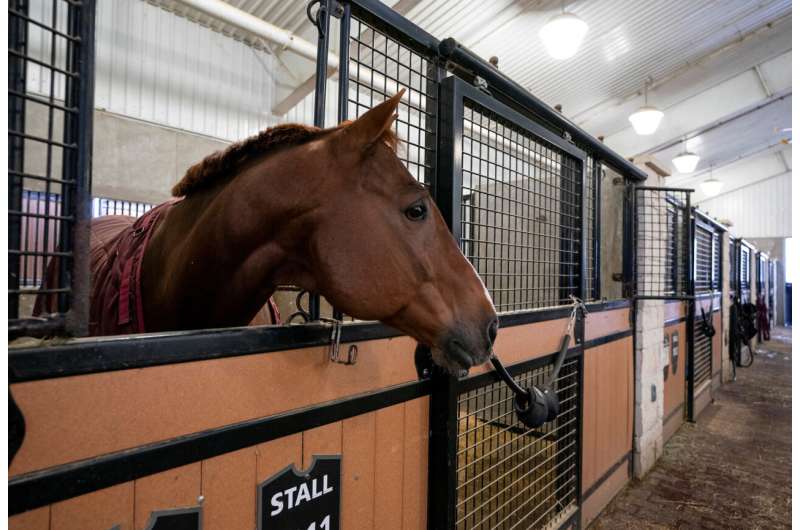New assay improves diagnostic detection of strangles disease in horses

Research initiated at the Equine Infectious Disease Laboratory, EIDL, at Texas A&M University to explore the genomic components of strangles has now led to an improved assay at the Texas A&M Veterinary Medical Diagnostic Laboratory, TVMDL.
Strangles is a highly contagious disease that affects the upper respiratory system and lymph nodes of horses. The disease is caused by the bacterium Streptococcus equi subspecies equi, S. equi. Though clinical signs may be present, diagnostic detection is the only definitive method of identifying strangles.
The ancestor of S. equi, Streptococcus equi subspecies zooepidemicus, S. zoo, is considered a commensal organism and may cause pneumonia, endometriosis and abortion in horses. Together, both organisms contribute to high morbidity and variable mortality among horses.
Ellen Ruth Alexander Morris, Ph.D., began working on the project early in 2020 as a graduate research assistant with Noah Cohen, VMD, Ph.D., director of the EIDL, which is located in the Department of Large Animal Clinical Sciences in the School of Veterinary Medicine and Biomedical Sciences.
"There was no initial plan to develop a new assay," Alexander Morris said. "The idea evolved from another ongoing project, where we were examining the genome-wide differences between 50 strains of S. equi and 50 strains of S. zoo using whole genome sequencing."
Their evaluation of the different strains led to the development of additional primers, which are DNA sequences that can be used to detect both S. equi and S. zoo.
Current detection methods
Classically, strangles was detected by culturing S. equi and S. zoo in a slow and not very sensitive method. Over time, multiple tests using polymerase chain reaction, PCR, technology have been developed to detect S. equi and S. zoo individually.
Although quicker and more sensitive than bacterial culture, PCR testing for strangles is still somewhat limited. PCR testing uses primers to target specific DNA sequences to determine an organism's presence. Because of genetic similarities between S. equi and S. zoo, some tests may not be able to differentiate between the two organisms and may lead to false positives.
Conversely, in some samples the typically targeted sequence of S. equi has been truncated or deleted, and therefore testing leads to a false negative. Other PCR tests, such as the one previously offered at TVMDL, cannot differentiate coinfection with S. equi and S. zoo due to the organisms' multiple genetic similarities.
Improved PCR testing
The new primers were designed from S. equi and S. zoo strains collected from clinical samples of Texas horses and using publicly available S. equi and S. zoo strains from across the world. TVMDL's molecular diagnostics section performed validation testing using the new primers and determined they could be used to detect and differentiate between S. equi and S. zoo. This assay also includes an internal control that serves as a monitor for PCR efficiency and sample inhibition. Following validation, TVMDL can now use these primers for routine diagnostic testing.
"Our hope is these new PCR targets will aid in the diagnosis of strangles, identify cases of concurrent infection of S. equi and S. zoo, or improve differentiation between the two organisms," said Alexander Morris, who is now a postdoctoral research assistant at TVMDL.
Provided by Texas A&M University


















